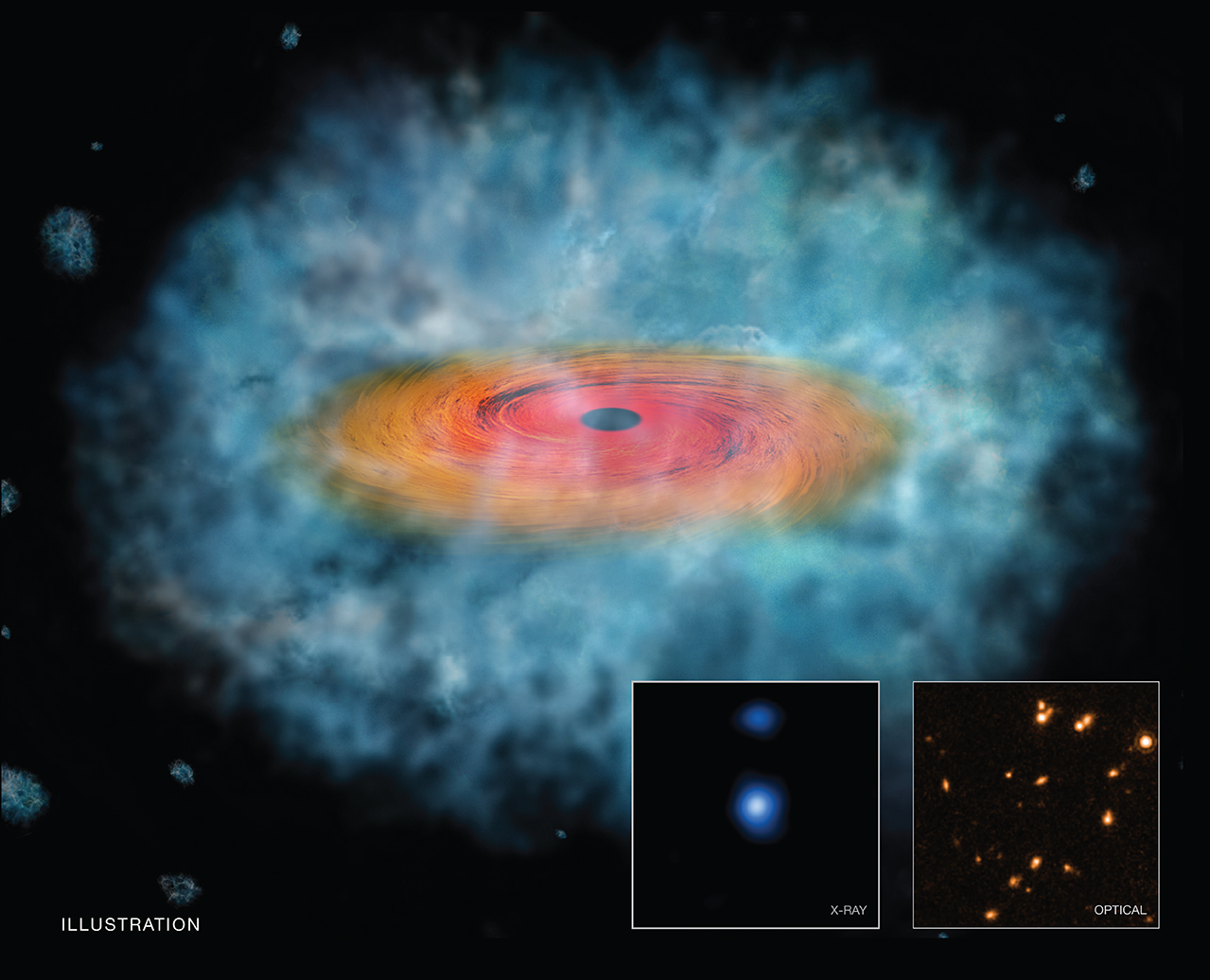Mystery Solved? Supermassive Black Holes Likely Born Big

Supermassive black holes were probably born big, a new study reports.
These behemoths — which lie at the hearts of most if not all galaxies, and can contain billions of times more mass than the sun — probably form after the collapse of gigantic gas clouds, rather than the death of individual stars, as some astronomers had thought, the study suggests.
"There is a lot of controversy over which path these black holes take," study co-author Andrea Ferrara, of Scuola Normale Superiore in Pisa, Italy, said in a statement. "Our work suggests we are converging on one answer, where black holes start big and grow at the normal rate, rather than starting small and growing at a very fast rate." [Images: Black Holes of the Universe]
The researchers, led by Fabio Pacucci (also of Scuola Normale Superiore), identified two probable supermassive black hole "seeds" after studying observations made by NASA's Chandra X-ray Observatory, Spitzer Space Telescope and Hubble Space Telescope (which NASA operates jointly with the European Space Agency).
"Black hole seeds are extremely hard to find, and confirming their detection is very difficult," co-author Andrea Grazian, from the National Institute for Astrophysics in Italy, said in the same statement. "However, we think our research has uncovered the two best candidates so far."
Both of the seed candidates contain about 100,000 solar masses, and formed less than 1 billion years after the Big Bang (which created the universe about 13.8 billion years ago). The seeds' size and age imply that, at least in the early universe, supermassive black holes started out large, with the collapse of giant gas clouds, the researchers said.
Smaller black holes do exist, of course; the gravitational collapse of huge, dead stars gives rise to stellar-mass black holes, which contain 10 to 100 times the mass of the sun. And these objects can get bigger, by merging with other black holes and sucking up nearby gas. But such small seeds likely do not grow into the monsters at the hearts of galaxies, the new study suggests.
Breaking space news, the latest updates on rocket launches, skywatching events and more!
The researchers stressed that their conclusions are preliminary. For example, more observations are needed to confirm that the two candidates are indeed supermassive black hole seeds, as suspected. And drawing firm conclusions about such seeds' origins will require finding and studying more than two of the objects, team members said.
The new study has been accepted for publication in the journal Monthly Notices of the Royal Astronomical Society.
Follow Mike Wall on Twitter @michaeldwall and Google+. Follow us @Spacedotcom, Facebook or Google+. Originally published on Space.com.

Michael Wall is a Senior Space Writer with Space.com and joined the team in 2010. He primarily covers exoplanets, spaceflight and military space, but has been known to dabble in the space art beat. His book about the search for alien life, "Out There," was published on Nov. 13, 2018. Before becoming a science writer, Michael worked as a herpetologist and wildlife biologist. He has a Ph.D. in evolutionary biology from the University of Sydney, Australia, a bachelor's degree from the University of Arizona, and a graduate certificate in science writing from the University of California, Santa Cruz. To find out what his latest project is, you can follow Michael on Twitter.

